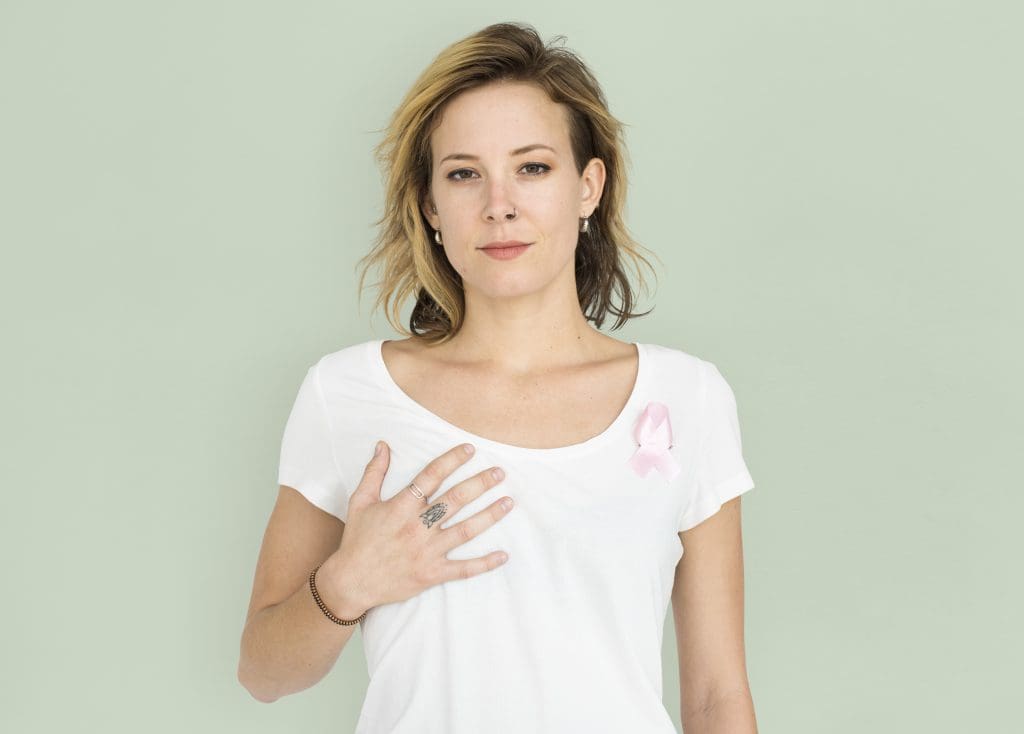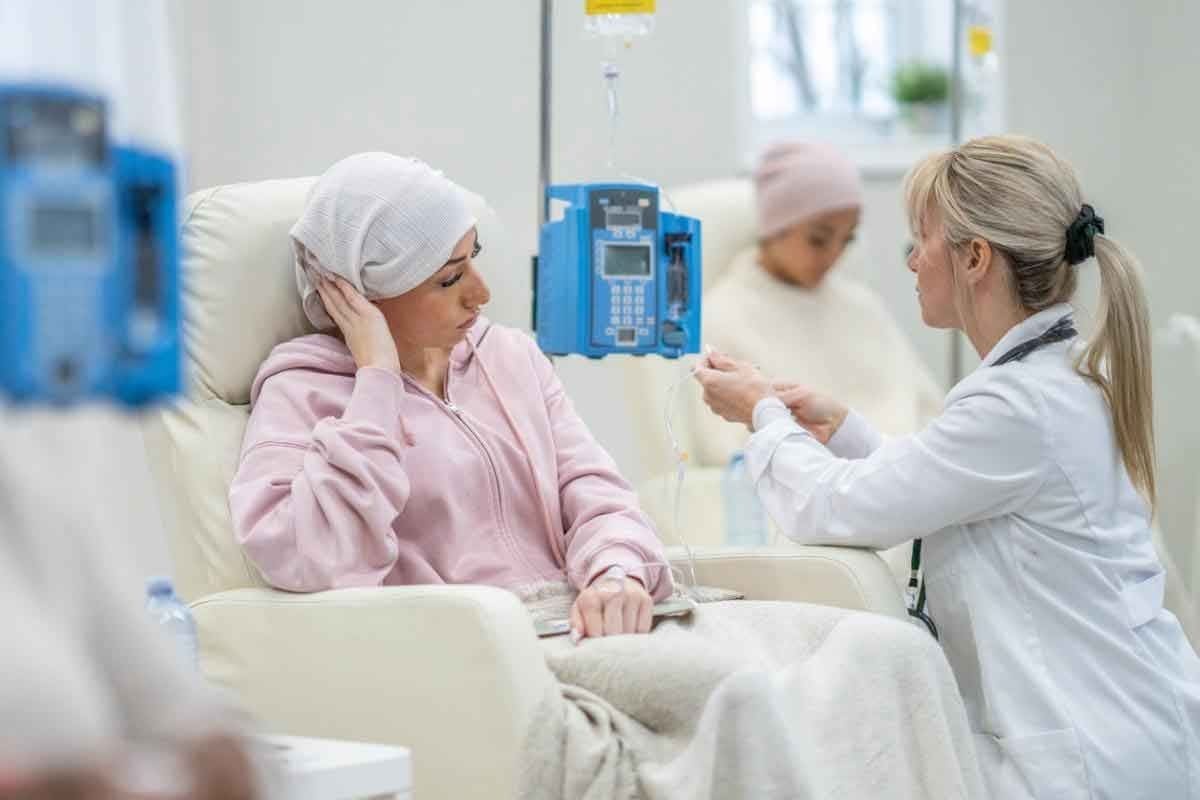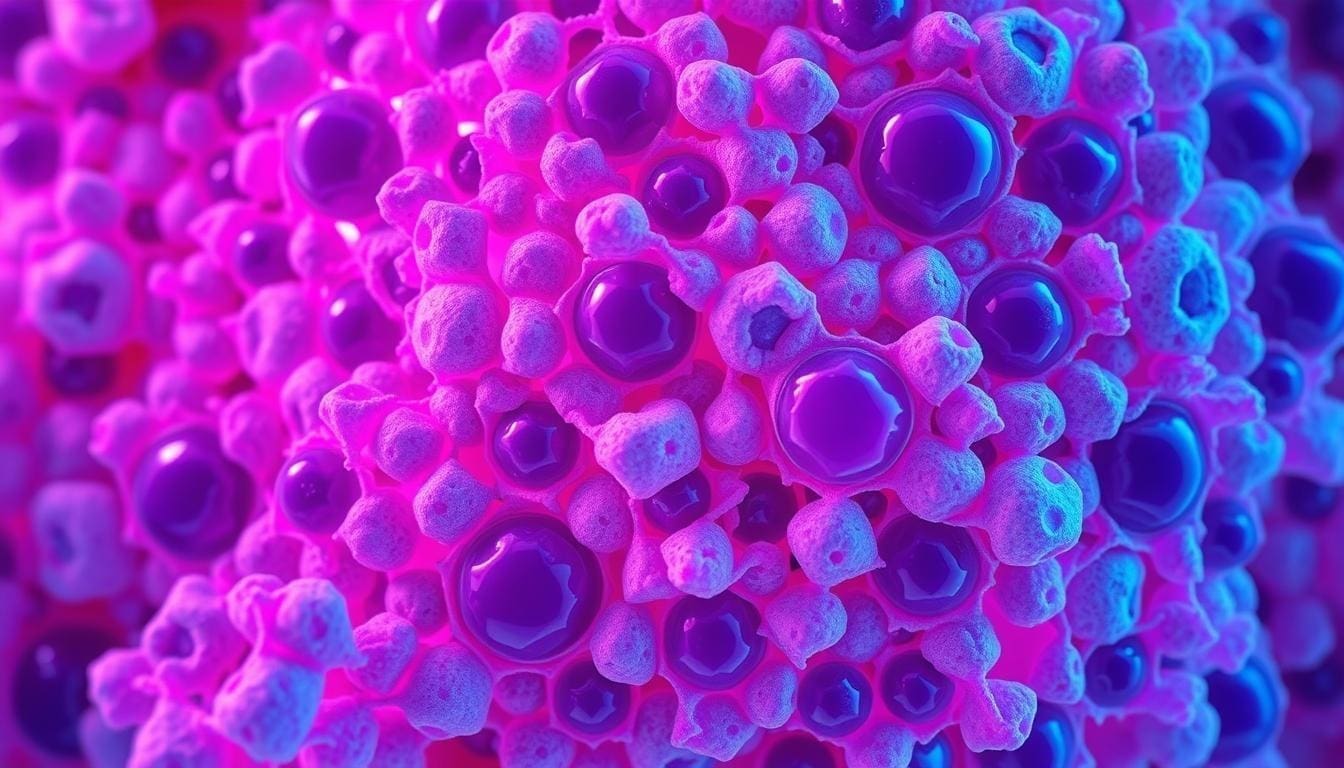Last Updated on November 27, 2025 by Bilal Hasdemir
Can you live your whole life with breast cancer? Breast cancer is a big health issue, being the most common cancer in the UK. Early detection is key to better survival rates. It’s important for people to know their health status.
Survival rates for breast cancer have improved over the years. This is true for those diagnosed early. But, life expectancy for those with advanced cancer can vary a lot.
It’s important to understand cancer’s effects on life expectancy and the need for early detection. This article aims to give insights into living with cancer and what affects survival rates.
Key Takeaways
- Early diagnosis significantly improves survival chances.
- Life expectancy varies greatly depending on the cancer’s progression.
- Awareness and regular check-ups are key for timely detection.
- Survival rates have improved thanks to better medical treatments.
- Understanding the disease is essential for managing its impact.
Understanding Breast Cancer and Its Progression

The journey with breast cancer is unique for each person. It depends on the type and stage at diagnosis. Knowing how the disease progresses is key to understanding survival rates.
Types and Stages of Breast Cancer
Breast cancer is divided into types based on cell origin and genetics. The main types are ductal carcinoma, lobular carcinoma, and inflammatory breast cancer. Staging looks at tumor size, lymph node involvement, and if it has spread.
The stages range from 0 (in situ) to IV (metastatic). Stage II breast cancer prognosis is generally good because it’s caught early and treated promptly.
- Ductal carcinoma in situ (DCIS)
- Invasive ductal carcinoma
- Invasive lobular carcinoma
How Breast Cancer Develops and Spreads
Breast cancer starts with genetic mutations that let cells grow out of control. It can move through the lymphatic system or bloodstream to other organs. Knowing how it spreads helps understand breast cancer survival rate by stage.
Early-stage cancer is usually easier to treat. But advanced stages need stronger treatments.
Other factors like overall health, fitness, and treatment response also affect survival. Understanding these helps patients and doctors make better treatment choices.
Breast Cancer Survival Rates by Stage
Breast cancer survival rates change a lot based on the stage at diagnosis. Knowing these rates helps patients understand their chances and treatment options.
Early-Stage Breast Cancer Survival Outlook
Women with stage 1 breast cancer have a very good survival outlook. UK statistics show almost 100% of these women survive for 5 years or more. The 20-year survival rate for stage 1 is also high, showing how early detection and treatment work well.
Key statistics for stage 1 and 2 breast cancer include:
- High 5-year survival rates, often above 90%
- Effective treatment options, including surgery and radiation therapy
- Improved prognosis with early detection
Stage 3 Breast Cancer Life Expectancy
Stage 3 breast cancer is locally advanced. Life expectancy depends on health and treatment response. While the 5-year survival rate is lower, treatment progress has helped many patients.
It’s essential for patients to discuss their individual prognosis with their healthcare provider.
Stage 4 Breast Cancer Prognosis Survival
Stage 4 breast cancer has a varied prognosis. Over 25% of women with stage 4 survive for 5 years or more. Despite the challenges, there are treatments to manage the disease and improve life quality.
Some key considerations for stage 4 breast cancer include:
- Palliative care to manage symptoms and treatment side effects
- Targeted therapies and hormone therapy to slow disease progression
- Participation in clinical trials for emerging treatments
Breast cancer survival rates by stage highlight the importance of early detection and personalized treatment. Understanding the cancer’s specifics and the patient’s health helps doctors create effective plans to improve outcomes.
Factors That Influence Breast Cancer Survival
Surviving breast cancer depends on several key factors. These include age, overall health, and cancer characteristics. Each person’s journey with breast cancer is unique because of these factors.
Age, Overall Health, and Comorbidities
Age at diagnosis is a big factor in survival. Older patients might face poorer outcomes due to less physical strength and comorbidities. Overall health, including other medical conditions, affects how well a patient does during treatment.
For example, patients with heart disease or diabetes may face extra challenges. This is because their bodies might not handle treatments as well.
Cancer Subtype and Genetic Markers
The type of breast cancer and genetic markers are also key. For instance, hormone receptor-positive cancers usually have a better outlook than triple-negative ones. Genetic markers like BRCA1 and BRCA2 can change treatment choices and survival chances.
Knowing these details helps tailor treatments to fit each patient’s cancer profile. This approach can improve survival chances.
Treatment Response and Resistance Patterns
How well a patient responds to treatment is critical. Some cancers may start responding but then become resistant. This can affect long-term survival.
By watching how treatments work and adjusting plans, outcomes can improve. New therapies and clinical trials offer hope for those with resistant cancers.
Understanding these factors helps patients and doctors navigate breast cancer treatment better. This can lead to better survival rates and quality of life.
Modern Treatment Approaches and Survival Rates
Modern treatments have changed how we fight breast cancer, making survival chances better. New research and tech have brought many effective treatments to life. These advancements help patients at all stages of breast cancer.
Standard Treatments: Surgery, Radiation, and Chemotherapy
For breast cancer, we use surgery, radiation, and chemotherapy. Surgery aims to remove the tumor and affected lymph nodes. Radiation therapy kills any leftover cancer cells, lowering the chance of it coming back. Chemotherapy treats cancer that has spread or is at high risk of spreading.
These treatments have gotten better over time. Research keeps making them work better and with fewer side effects.
| Treatment | Purpose | Benefits |
| Surgery | Remove tumor and affected lymph nodes | Reduces risk of cancer spread |
| Radiation Therapy | Kill remaining cancer cells | Decreases recurrence risk |
| Chemotherapy | Treat cancer that has or may spread | Improves survival rates |
Hormone Therapy and Targeted Treatments
Hormone therapy helps hormone receptor-positive breast cancers. It blocks hormones from reaching cancer cells. Targeted treatments, like HER2-targeted therapy, are for cancers with specific genetic markers. These treatments have greatly helped patients with these types of cancer.
Immunotherapy and Precision Medicine
Immunotherapy boosts the body’s immune system to fight cancer. Precision medicine tailors treatment to a patient’s unique cancer. These new methods are showing great promise in bettering survival rates and quality of life for breast cancer patients.
Clinical Trials and Emerging Therapies
Clinical trials are key for finding new, better treatments. New treatments, like targeted and immunotherapies, offer hope for better outcomes. Patients should talk to their doctors about the benefits and risks of joining clinical trials.
It’s important to remember that treatments get better over time. Survival rates are based on data from women diagnosed five years ago. So, today’s survival rates are likely even better.
Living With Metastatic Breast Cancer
Managing metastatic breast cancer is more than just treating the cancer. It’s about improving the patient’s overall well-being. This approach is key to a better quality of life for those with MBC.
Managing Symptoms and Treatment Side Effects
It’s important to manage symptoms and side effects well. This can include medicines for pain, nausea, and other issues. Making lifestyle changes can also help manage fatigue and improve health.
- Medications for symptom management
- Lifestyle changes to reduce fatigue
- Alternative therapies for pain and stress relief
Palliative Care and Quality of Life Considerations
Palliative care is a big part of treating MBC. It focuses on easing symptoms and stress from serious illness. The goal is to enhance life quality for the patient and their family.
“Palliative care is not just for end-of-life care; it’s for anyone living with a serious illness, providing support and improving quality of life.”
” Palliative Care Specialist
Stories of Long-Term Metastatic Breast Cancer Survivors
There are many inspiring stories of people living with MBC for years. These stories show the power of resilience, support, and new treatments.
| Treatment Approach | Life Expectancy | Quality of Life Considerations |
| Hormone Therapy | 5+ years with treatment | Management of menopause symptoms |
| Targeted Therapy | Variable, depending on cancer subtype | Monitoring for side effects |
| Chemotherapy | Several years with treatment | Managing side effects like hair loss and nausea |
Knowing about life expectancy and quality of life can help in choosing treatments. With the right plan, many patients can live active and fulfilling lives.
The Reality of Untreated Breast Cancer
It’s important for patients and doctors to know what happens if breast cancer isn’t treated. The disease can grow and spread, affecting the body in many ways. This can make life harder and change how well a person feels.
Natural Progression Without Medical Intervention
Without treatment, breast cancer can grow and spread. This is called metastasis. It can make a person very sick and lower their quality of life.
In England, survival rates for breast cancer depend on when it’s found. Women with stage 1 cancer have a better chance of living longer than those found later.
| Stage at Diagnosis | 5-Year Survival Rate |
| Stage 1 | 95% |
| Stage 2 | 85% |
| Stage 3 | 55% |
| Stage 4 | 25% |
Special Considerations for Elderly Patients
Elderly people with untreated breast cancer face special challenges. They may have other health issues and not be as strong. Doctors must think about their overall health and how long they might live when deciding on treatment.
Some elderly patients choose palliative care instead of trying to cure the cancer. This focuses on easing symptoms and improving their life quality. Knowing how untreated breast cancer progresses and the needs of older patients helps doctors give better care.
Long-Term Survival and Life After Treatment
After breast cancer treatment, patients often wonder about their long-term survival. Each person’s recovery journey is unique. Knowing what affects long-term survival can offer valuable insights.
Understanding Remission and Recurrence
Remission means the cancer is controlled, and there are no signs of it. But, the risk of it coming back is always there. It’s key for patients to keep up with regular check-ups.
According to the American Cancer Society, recurrence can happen months or even years after treatment. Knowing the risk factors and signs of recurrence helps patients get medical help quickly.
20-Year and 30-Year Survival Statistics
Long-term survival stats offer hope to breast cancer patients. About 75 out of 100 women survive their cancer for 10 years or more after diagnosis. Thanks to better treatments, the 20-year survival rate for breast cancer patients is getting better.
While 30-year survival stats are less common, they are also being tracked. This helps us understand the long-term outcomes of patients.
Emotional and Psychological Aspects of Survivorship
Surviving breast cancer is not just about physical health. It’s also about emotional and psychological well-being. As one survivor said,
“The journey doesn’t end after treatment; it’s a new beginning.”
Survivors often face challenges like anxiety, depression, and fear of recurrence. It’s vital for patients to have access to support groups, counseling, and mental health services.
A breast cancer specialist says, “The emotional and psychological support of patients is just as important as their medical treatment.” By recognizing the holistic needs of survivors, we can offer better care and improve their quality of life.
Support Resources for Breast Cancer Patients
Breast cancer patients have many support resources to help them. These resources can make a big difference in their treatment and well-being. They help with the many challenges patients face during and after treatment.
Medical Support Teams and Follow-up Care
Medical support teams are key in treating and caring for breast cancer patients. These teams include oncologists, surgeons, nurses, and more. They work together to give complete care. Regular check-ups are important to watch the patient’s health and catch any problems early.
Support Groups anda Mental Health Services
Support groups and mental health services are very important. They help with the emotional and mental effects of breast cancer. Support groups let patients share their stories and connect with others facing similar issues. Mental health services, like counseling, help with anxiety, depression, and other mental health issues.
Financial and Practical Resources
Breast cancer treatment can be expensive, and patients often need help. Organizations offer financial aid, transportation, and home care support. For example, some groups have financial assistance programs for treatment costs. Others provide practical resources like wig banks for those losing hair from chemotherapy.
| Resource Type | Description | Benefits |
| Medical Support Teams | Comprehensive care from oncologists, surgeons, nurses, and other healthcare professionals. | Improved health outcomes, early detection of recurrence. |
| Support Groups | Platforms for sharing experiences and connecting with others. | Emotional support, reduced feelings of isolation. |
| Financial Assistance Programs | Aid for treatment costs, transportation, and home care. | Reduced financial burden, access to necessary care. |
Conclusion: Navigating Life With Breast Cancer
Living with breast cancer means knowing a lot about the disease and its treatments. Survival rates are based on past data of people with cancer. This information helps patients and families make better choices.
Can you survive breast cancer? It depends on many things like the cancer’s stage, your health, and how well you respond to treatment. Even though it’s not always curable, new treatments have made survival chances better. The age of death from breast cancer varies, showing how key early detection and good treatment are.
Understanding what affects survival and using available resources can help patients manage their disease. It’s important to stay informed and work with healthcare providers. This way, patients can get the best treatment and live better with breast cancer.
FAQ
What are the survival rates for different stages of breast cancer?
Survival rates for breast cancer change with the stage. Stage 1 has a 5-year survival rate of about 99%. Stage 2 is around 85-90%. Stage 3 is 50-70%, and Stage 4 is 20-30%.
Can you die from breast cancer?
Yes, breast cancer can be deadly if not caught early. It can spread and become harder to treat.
What is the average lifespan for stage 4 breast cancer?
Lifespan for stage 4 breast cancer varies. It depends on health and how well treatment works. The 5-year survival rate is about 20-30%.
How long can you live with untreated breast cancer?
Untreated breast cancer can grow fast. Lifespan depends on the person and cancer stage. Generally, it’s fatal in a few years.
What are the factors that influence breast cancer survival?
Survival is influenced by age, health, cancer type, and genetic markers. Treatment response also plays a role. These factors affect prognosis and treatment success.
What are the treatment approaches for breast cancer?
Treatments include surgery, radiation, and chemotherapy. Hormone therapy, targeted treatments, and immunotherapy are also used. Clinical trials and new therapies are available.
Can you survive metastatic breast cancer?
Metastatic breast cancer is serious but some survive for years with right treatment. Managing symptoms and side effects is key to quality of life.
What are the support resources available for breast cancer patients?
Patients have many support options. This includes medical teams, support groups, mental health services, and financial help. These resources help with diagnosis and treatment.
What is the 20-year and 30-year survival rate for breast cancer?
Survival rates for 20 and 30 years vary by stage. Early-stage breast cancer has a 60-70% 20-year survival rate. The 30-year rate is 50-60%.
How does untreated breast cancer progress in elderly patients?
Untreated breast cancer in the elderly progresses quickly. It’s more aggressive due to age-related health issues. Special care is needed for elderly patients.






